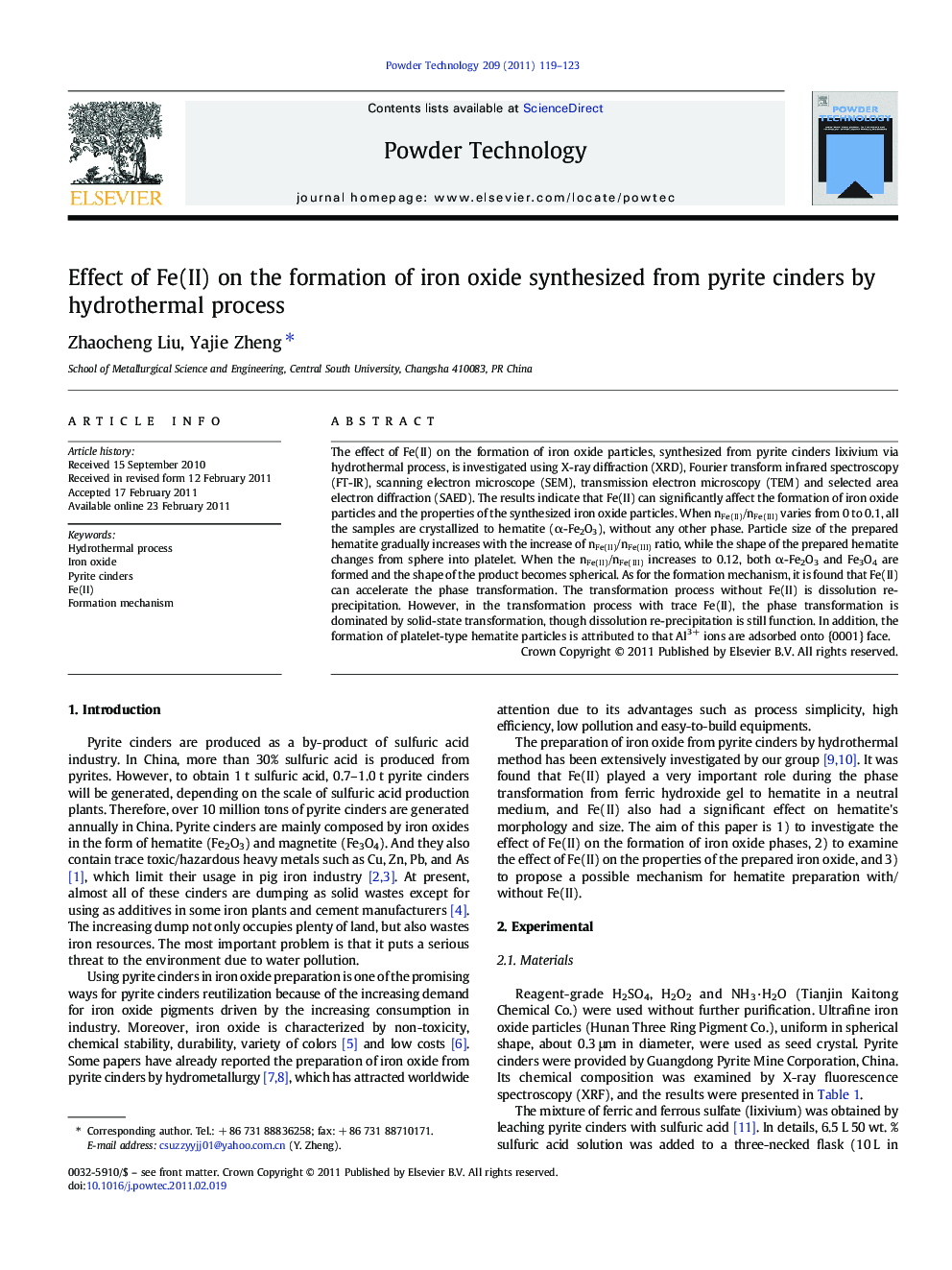| کد مقاله | کد نشریه | سال انتشار | مقاله انگلیسی | نسخه تمام متن |
|---|---|---|---|---|
| 237628 | 465716 | 2011 | 5 صفحه PDF | دانلود رایگان |

The effect of Fe(II) on the formation of iron oxide particles, synthesized from pyrite cinders lixivium via hydrothermal process, is investigated using X-ray diffraction (XRD), Fourier transform infrared spectroscopy (FT-IR), scanning electron microscope (SEM), transmission electron microscopy (TEM) and selected area electron diffraction (SAED). The results indicate that Fe(II) can significantly affect the formation of iron oxide particles and the properties of the synthesized iron oxide particles. When nFe(II)/nFe(III) varies from 0 to 0.1, all the samples are crystallized to hematite (α-Fe2O3), without any other phase. Particle size of the prepared hematite gradually increases with the increase of nFe(II)/nFe(III) ratio, while the shape of the prepared hematite changes from sphere into platelet. When the nFe(II)/nFe(III) increases to 0.12, both α-Fe2O3 and Fe3O4 are formed and the shape of the product becomes spherical. As for the formation mechanism, it is found that Fe(II) can accelerate the phase transformation. The transformation process without Fe(II) is dissolution re-precipitation. However, in the transformation process with trace Fe(II), the phase transformation is dominated by solid-state transformation, though dissolution re-precipitation is still function. In addition, the formation of platelet-type hematite particles is attributed to that Al3+ ions are adsorbed onto {0001} face.
Effect of Fe(II) on the formation of iron oxide synthesized from pyrite cinders is investigated. TEM micrograph (Fig. 5) reveals that the iron oxide particles obtained at nFe(II)/nFe(III) = 0.08 are hexagonal platelets. Fig. b shows an individual hexagonal hematite platelet. The inset reveals that the synthetic iron oxide is single crystal and well crystallized.Figure optionsDownload as PowerPoint slideResearch highlights
► Fe(II) accelerates the phase transformation.
► The phase transformation without Fe(II) is dissolution re-precipitation.
► The phase transformation with trace Fe(II) is dominated by solid-state transformation.
► The formation of hematite platelets is attributed to Al3+ adsorption onto {0001} face.
Journal: Powder Technology - Volume 209, Issues 1–3, 15 May 2011, Pages 119–123